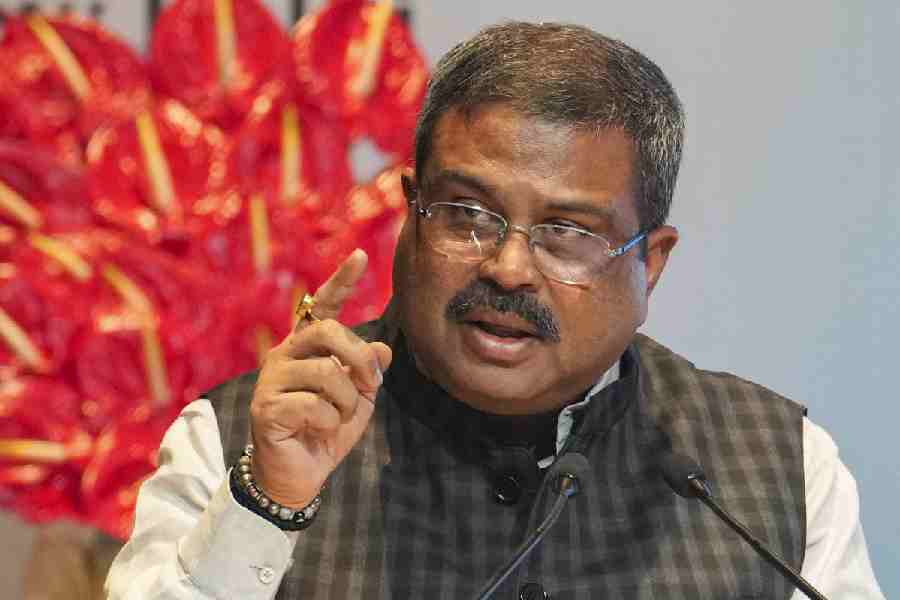 |
| The macrobiotic diet: The new nutritionists? most favoured prescription |
The macrobiotic diet is not just a diet, it is a philosophy. A Japanese educator, George Ohsawa, believed that simplicity was the key to optimal health. In a low-fat, fibre-rich diet, the kind that is prescribed all the world over by nutritionists, Ohsawa recommended 10 progressively restrictive stages until the last one consisted of only brown bread and water.
However, intelligent diet counsellors have their doubts on that one, and Ohsawa?s version of the diet is never recommended these days. However, another nutritionist, Michio Kushi, is responsible for giving the diet a better shape and popularising it. Most people who follow the macrobiotic diet think it is a very healthy way of eating that integrates physical, spiritual and planetary health.
Nutritionists would be the happiest if their clients followed the diet. The macrobiotic diet is an organic diet, which involves the intake of whole grains and sprouted seeds and vegetables without cooking them. Nutritionist Shikha Sharma calls it ?ideally the best diet possible?. It is believed to minimise the risk of cancer and other chronic diseases due to its high-fibre content and the eating of soya products rich in a compound called phytoestrogen (which is a great regulator of estrogen-related cancers such as breast cancer). Many also believe that the diet helps with menopause and premenstrual syndrome (PMS), although that needs to be supported by further research.
While the diet is popular in North America (for, contrary to food patterns there, it emphasises whole grains, vegetables and beans), it is easier for Indians to follow it as it fits into our eating habits, except that the food is uncooked. In Sharma?s clients who have followed it, there has been marked improvement in health. ?Their joint pains have vanished, their hair has become healthier, and they are a lot fitter than they were, just after a month or two of following the diet,? says Sharma. ?Ashrams and spas all over the world prescribe the macrobiotic diet for wholesome living.?
But while it does not require you to have to cut down on quantity (nor does it make extravagant promises of a dramatic weight loss within days), it?s not the easiest diet to follow: no meat, no dairy products, no sugar. And if that wasn?t difficult enough, no cooked foods either. ?Most of my clients who are prescribed the macrobiotic diet find it difficult to develop the taste for raw food,? rues Sharma. Which is why these days, most dieticians end up altering the charts a little to suit their clients? needs. And while some doctors are also worried that the absence of spices will lead to a deficiency of vitamin B12, iron, magnesium and calcium, measured amounts of certain condiments can now take care of it. The other problem: total abstinence from meat and dairy products may sometimes lead to lowered energy levels, although adequate whole grains make up for it most of the time. The trick, some believe, is not to remain strictly macrobiotic.
For example, these days, fish and seafood have become an essential part of the diet, which was earlier a strictly vegetarian one. And the entire concept of eating raw food is giving way to a much moderate version. Dieticians agree to let their clients have boiled or baked vegetables, and where grains are concerned, dry barley and corn have given way to a much more civilised bread and pasta intake. Indians also have the advantage of eating sprouted beans and seeds, and Shikha Sharma assures they do wonders for the body.
Big names on the menu
 |
 Bollywood celebs are yet to wake up to the wonders of raw food, but big names in Hollywood swear by the word macrobiotic. New York magazine has called it the most popular diet for New Yorkers.
Bollywood celebs are yet to wake up to the wonders of raw food, but big names in Hollywood swear by the word macrobiotic. New York magazine has called it the most popular diet for New Yorkers.
 Madonna hires a private cook, Mayumi Nishimura, one of the best cooks and teachers at the Kushi Institute in Becket, Massachusetts. Rumour has it that Madonna was inspired towards macrobiotics by her husband, Guy Ritchie, and her close friend, Gwyneth Paltrow (left), both practitioners of the macrobiotic lifestyle. While Gwyneth Paltrow and Madonna were performing onstage in London last season, they bonded over a macrobiotic regimen featuring the green bancha twig tea. (It’s another matter that Paltrow has now junked the diet in favour of takeaways.)
Madonna hires a private cook, Mayumi Nishimura, one of the best cooks and teachers at the Kushi Institute in Becket, Massachusetts. Rumour has it that Madonna was inspired towards macrobiotics by her husband, Guy Ritchie, and her close friend, Gwyneth Paltrow (left), both practitioners of the macrobiotic lifestyle. While Gwyneth Paltrow and Madonna were performing onstage in London last season, they bonded over a macrobiotic regimen featuring the green bancha twig tea. (It’s another matter that Paltrow has now junked the diet in favour of takeaways.)
 Other famous people practising macrobiotics: Barbra Streisand, John Travolta, Nicole Kidman, Joe Pesci, Steven Seagal, Mike Maloney, Roland Gift, Dirk Benedict, Boy George, Yoko Ono and the late Beatles singer John Lennon.
Other famous people practising macrobiotics: Barbra Streisand, John Travolta, Nicole Kidman, Joe Pesci, Steven Seagal, Mike Maloney, Roland Gift, Dirk Benedict, Boy George, Yoko Ono and the late Beatles singer John Lennon.
What to eat
 Whole grains: 50 to 60 per cent each meal. Whole grain includes brown rice, whole wheat berries (not grains), barley, millet and corn. Occasionally, one might take rolled oats, noodles, pasta and some baked goods.
Whole grains: 50 to 60 per cent each meal. Whole grain includes brown rice, whole wheat berries (not grains), barley, millet and corn. Occasionally, one might take rolled oats, noodles, pasta and some baked goods.

 Vegetables: At least 25 to 30 per cent of daily intake. And raw. Although, the non-purists could steam, boil, bake or saute them.
Vegetables: At least 25 to 30 per cent of daily intake. And raw. Although, the non-purists could steam, boil, bake or saute them.
 Beans: 10 per cent of daily intake. If possible, tofu (soyamilk curd), tempeh and natto (fermented soyabeans).
Beans: 10 per cent of daily intake. If possible, tofu (soyamilk curd), tempeh and natto (fermented soyabeans).
 Animal food: Small amounts of fish or seafood several times a week.
Animal food: Small amounts of fish or seafood several times a week.
 Seeds and nuts: In moderation, preferably roasted and lightly salted with
Seeds and nuts: In moderation, preferably roasted and lightly salted with
sea salt.

 Fruits: Several times a week. Apples, pears, peaches, apricots, grapes, berries and melons, mainly. But not tropical fruits such as mango, pineapple or papaya.
Fruits: Several times a week. Apples, pears, peaches, apricots, grapes, berries and melons, mainly. But not tropical fruits such as mango, pineapple or papaya.
 Desserts: Two to three times a week, but only for those in good health. Natural sweeteners such as rice syrup and barley malt can be used.
Desserts: Two to three times a week, but only for those in good health. Natural sweeteners such as rice syrup and barley malt can be used.

 Oil: Non-refined vegetable oil, like sesame, corn and mustard seed.
Oil: Non-refined vegetable oil, like sesame, corn and mustard seed.
 Seasonings: Natural sea salt, brown rice vinegar, grated ginger root, fermented pickles, roasted sesame seeds, roasted seaweed and sliced scallions (green onions).
Seasonings: Natural sea salt, brown rice vinegar, grated ginger root, fermented pickles, roasted sesame seeds, roasted seaweed and sliced scallions (green onions).










